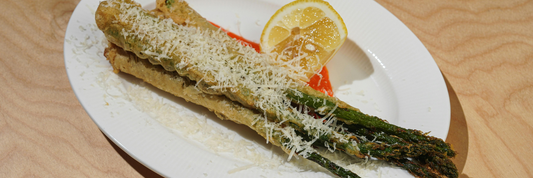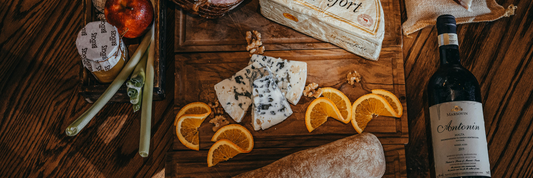Running a successful Japanese restaurant in North America today is not just about ingredients or presentation — it’s about authenticity. Guests expect an experience that honors the tradition and precision of Japanese cuisine. Yet, one of the greatest challenges restaurant owners face is finding and keeping skilled Japanese chefs who embody that authenticity.
At Kimecopak, we understand this struggle deeply. As a trusted partner for hundreds of sustainable restaurants across North America, we’ve seen how the right team paired with the right systems defines long-term success. Beyond providing eco-friendly restaurant packaging solutions, we help businesses create holistic, people-centered operations where chefs, staff, and values align.
Let’s explore how to hire and retain top Japanese chefs in this highly competitive market with strategies built on experience, sustainability, and respect for culture.
-
Ramen Shop Checklist: Everything You Need Before Opening in Canada
-
Sushi Pricing Strategy: How to Compete with Big Restaurant Chains
-
How Can Sushi Startup Overcome Challenges in a Diverse Sea of Sushi Market?
Understanding the Demand for Japanese Chefs in North America

Why the Demand Keeps Growing
Japanese cuisine has become one of the fastest-growing dining trends across North America. From omakase experiences to casual ramen bars, customers seek authentic flavors and that means restaurants need chefs trained in traditional Japanese culinary arts.
According to ZipRecruiter, the average salary for a Japanese chef in the U.S. is around $51,225/year, with top professionals earning over $64,000. The demand is high, but the pool of skilled talent is limited.
Market Insights for Employers
-
Top Markets: California, New York, Texas, and Toronto
-
Experience Premium: Omakase and kaiseki chefs command 25–30% higher pay
-
Cultural Fit Matters: Chefs trained in Japan may need extra support adjusting to local work environments
Attracting Japanese Chef Talent

Define the Ideal Candidate Profile
When crafting your job description, clarity matters. Outline both technical and soft skills:
-
Expertise in sushi, sashimi, omakase, or tempura preparation
-
Strong knife and food safety skills
-
Understanding of Japanese ingredient sourcing
-
Adaptability to Western kitchen systems
-
English communication or willingness to learn
Where to Find Skilled Japanese Chefs
-
Specialized job boards like Culinary Agents or Poached Jobs
-
Japanese cultural and culinary associations
-
LinkedIn and Instagram portfolios
-
Culinary schools in Japan (via alumni networks)
-
Word-of-mouth from current Japanese staff
If you’re open to international recruitment, partner with immigration agencies or offer relocation support. These efforts show respect and seriousness toward the craft — qualities Japanese chefs value highly.
Build an Appealing Employer Brand
To stand out, your offer must go beyond salary. Highlight:
-
Career growth and creative freedom
-
Respectful, inclusive work culture
-
Opportunities to innovate with premium ingredients
-
Sustainability commitments (using eco-friendly packaging, sourcing responsibly, minimizing waste) values that resonate deeply with Japanese culinary philosophy
Kimecopak partners with many restaurants who integrate green packaging into their operations, showing chefs and customers alike that the business respects both craft and planet.
The Hiring Process: Selecting the Right Chef

Screening and Evaluation Steps
-
Portfolio Review: Ask for dish photos or short prep videos
-
Technical Test: A live demo of sushi cutting, rice seasoning, or plating
-
Cultural Fit Interview: Discuss teamwork, leadership, and adaptability
-
Reference Checks: Confirm work ethic, punctuality, and communication
Key Interview Questions
-
“How do you select fish for sushi service?”
-
“Describe how you handle pressure during omakase dinner rush.”
-
“How would you adapt Japanese dishes for North American ingredients?”
-
“What makes a great relationship between chef and restaurant owner?”
These questions reveal both culinary mastery and cultural awareness, ensuring you hire a chef who can thrive in your team long term.
Making an Attractive Offer
A competitive offer may include:
-
Base salary + bonuses or performance incentives
-
Assistance with work permits or relocation
-
Paid language training or professional development
-
Healthcare and vacation benefits
Transparency during the negotiation process builds trust a crucial factor for Japanese professionals.
Onboarding and Integrating Japanese Chefs
Cultural and Operational Onboarding
Successful onboarding ensures your chef feels valued and understood:
-
Provide a cultural orientation to explain communication styles and expectations
-
Assign a mentor or bilingual kitchen buddy
-
Use visuals or translated kitchen guides when possible
-
Create a supportive feedback loop in the first 90 days
Encourage Collaboration and Respect
Japanese chefs often come from hierarchical kitchens. In North America, they may need time to adjust to flatter structures. Promote two-way learning let your local staff learn Japanese culinary discipline, while helping your chef adapt to your pace and systems.
Set Clear Milestones
Use a 30–60–90 day plan to track integration progress:
-
30 days: Learn menu and workflow
-
60 days: Train junior staff or introduce a seasonal dish
-
90 days: Take ownership of full kitchen section
Retaining Japanese Chefs Long-Term

Build Trust Through Recognition
Retention begins with respect. Celebrate milestones, highlight achievements, and involve chefs in creative planning. Recognition goes beyond money — it’s about belonging.
Provide Growth and Learning
-
Offer courses in management or English communication
-
Fund culinary training or trips to Japan
-
Promote internal growth to leadership roles (Head Chef, Culinary Director)
Promote Well-Being and Balance
Turnover often comes from burnout. Ensure fair scheduling, safe working hours, and supportive benefits. Encourage rest and creativity Japanese culinary philosophy values balance as much as precision.
Kimecopak believes sustainable growth includes caring for people. A happy chef creates a happy kitchen and ultimately, a stronger brand.
Overcoming Common Challenges
| Challenge | Solution |
|---|---|
| Visa and Immigration Hurdles | Partner with immigration specialists; plan sponsorships early |
| Language Barriers | Offer language assistance or bilingual staff pairing |
| Cultural Misunderstandings | Conduct cross-cultural training for all team members |
| Retention Issues | Build engagement programs and clear career pathways |
Final Hiring & Retention Checklist

- Defined chef profile and cultural fit
- Posted job in specialized culinary networks
- Conducted skill demo + cultural interview
- Offered competitive pay and relocation support
- Built onboarding and mentorship plan
- Scheduled regular performance check-ins
- Established career development roadmap
FAQ: Hiring Japanese Chefs in North America
Q1. How much do Japanese chefs earn in North America?
The average salary is about $51,000–$60,000 per year, depending on experience, restaurant type, and location.
Q2. Should I hire chefs directly from Japan?
You can, but it involves visa sponsorship and relocation costs. Hiring locally trained Japanese chefs or those already in North America may be more efficient.
Q3. What’s the best way to retain Japanese chefs?
Provide growth opportunities, cultural respect, and a sustainable workplace culture that values both craft and people.
Q4. How does sustainability help attract chefs?
Many Japanese chefs value respect for ingredients and the environment. Using eco-friendly packaging from Kimecopak signals that your restaurant upholds similar values of harmony and sustainability.
Kimecopak proudly supports F&B businesses that believe sustainability and culinary excellence can go hand in hand. Whether through eco-friendly takeout packaging, custom branding, or restaurant consulting insights, we help you build a brand that chefs are proud to work for and customers love to return to.
👉 Visit Kimecopak.ca to explore sustainable solutions that align with your restaurant’s vision.




